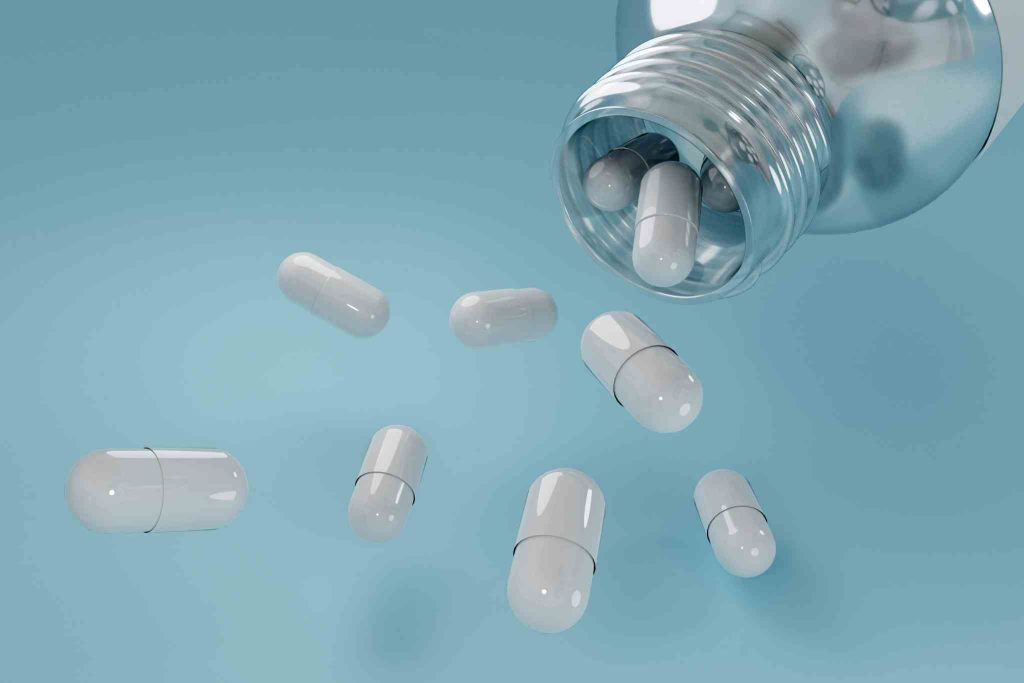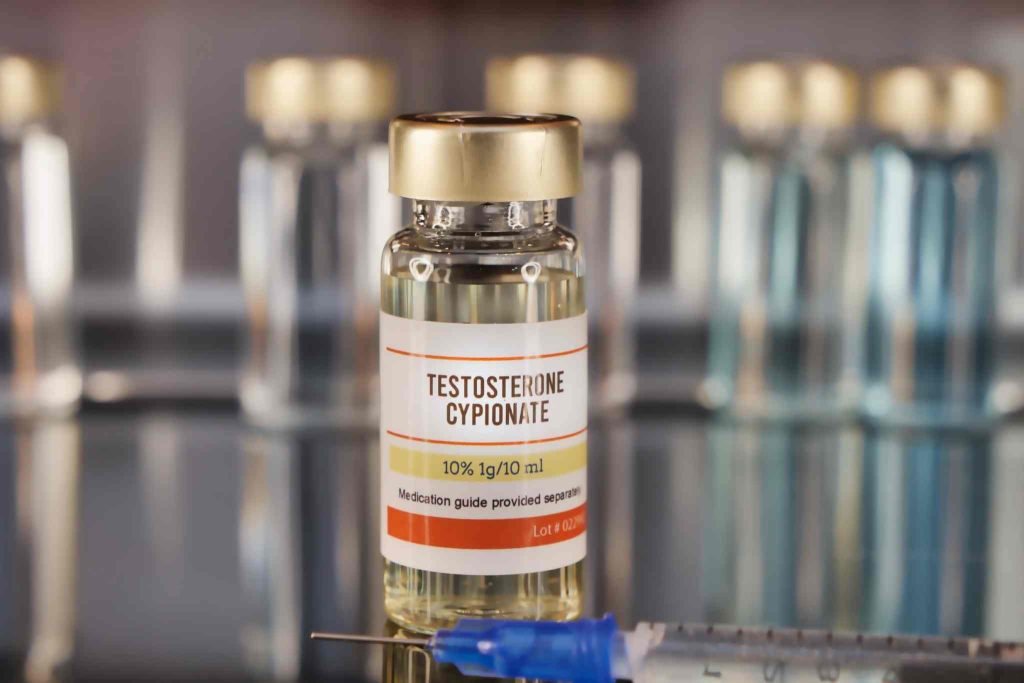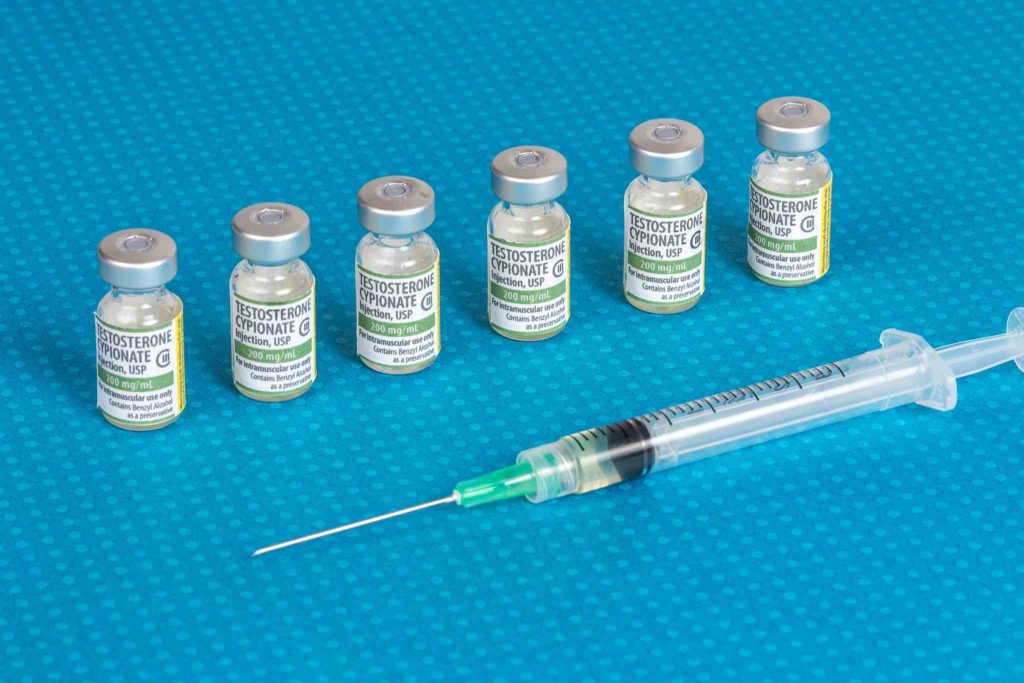
Testosterone plays a crucial role in men’s overall health, supporting muscle mass, energy levels, libido, and mood. When levels drop below normal, men may experience fatigue, depression, reduced sexual performance, and loss of muscle tone.
Recent data states that 2% of men may have low testosterone. In such cases, testosterone replacement therapy becomes a valid treatment path. With several testosterone replacement therapy options available today, choosing the right one is essential for achieving optimal outcomes.
Here are six of the best testosterone replacement therapy methods today.
Table of Contents
4. Testosterone Pellets (Subdermal Implants)
5. Buccal Testosterone (Gum/Inner Cheek Tablets)
6. Oral Testosterone (Undecanoate Capsules)
What to Consider Before Choosing TRT
Working With a Testosterone Replacement Therapy Provider
The Health You Deserve Starts with BioRestore!
Key Takeaways
✔ Testosterone injections are best for men seeking a fast-acting, affordable option, though they require needles and may cause hormonal fluctuations.
✔ Testosterone gels suit those who prefer a daily, non-invasive routine with stable hormone levels, but users must manage the risk of skin transfer.
✔ Testosterone patches offer a simple, once-daily method that delivers steady levels, although they can cause skin irritation or fall off during activity.
✔ Testosterone pellets work well for men wanting long-term, low-maintenance therapy, but the minor surgical insertion and irreversibility may be drawbacks.
✔ Buccal testosterone is discreet and needle-free, ideal for those comfortable with twice-daily use despite possible gum irritation or taste changes.
✔ Oral testosterone capsules are the most convenient to take, but they must be consumed with fat, require monitoring, and may be more expensive than other options

1. Testosterone Injections
Testosterone injections are injectable testosterone replacement therapy options used to treat low testosterone levels. The hormone is delivered directly into the muscle (intramuscular) or just under the skin (subcutaneous), depending on the formulation and provider recommendation.
Pros
- Rapid Effectiveness: Injections quickly raise testosterone levels, often producing noticeable improvements in mood, energy, libido, and muscle strength within weeks.
- Flexible Dosing Schedule: Most injections are administered every 1 to 2 weeks, allowing users to maintain levels with fewer treatments.
- High Absorption Rate: Since the hormone is injected directly into the body, there’s no concern about absorption through skin or the digestive tract.
- Affordable Option: Compared to other TRT options, injections are typically less expensive and widely covered by insurance.
Cons
- Requires Needles: Injections must be administered by a healthcare provider or self-administered, which may be uncomfortable for those with needle anxiety.
- Hormonal Peaks and Crashes: Testosterone levels can spike soon after injection and decline before the next dose, leading to mood swings or energy fluctuations.
- Injection Site Reactions: Some users may experience bruising, swelling, or soreness at the injection site.
- Monitoring Required: Regular blood tests are needed to ensure stable levels and adjust dosage if necessary.
Best For
Men who are:
- Comfortable with needles or have access to regular medical visits
- Looking for a cost-effective testosterone treatment
- Willing to monitor and manage fluctuating testosterone levels
2. Testosterone Gels
Testosterone gels are clear topical formulations applied directly to the skin, most commonly on the shoulders, arms, or abdomen. The hormone is absorbed transdermally into the bloodstream, offering a steady and predictable release throughout the day.
Pros
- Non-Invasive Application: No need for injections—just smooth the gel onto the skin as part of a daily routine.
- Steady Hormone Levels: Gels maintain more consistent testosterone levels, minimizing the highs and lows seen with some other testosterone replacement options.
- Quick Drying Formulas: Most products absorb quickly and dry within minutes, making them convenient for use in the morning or after a shower.
- Minimal Systemic Side Effects: Since gels avoid first-pass metabolism by the liver, they may reduce the risk of liver strain.
Cons
- Daily Commitment: Users must apply the gel at the same time each day to maintain hormonal stability.
- Transfer Risk: Testosterone residue can be transferred to others through skin contact if not fully dried, which may pose risks to children or partners.
- Environmental Sensitivity: Sweating, swimming, or bathing shortly after application can reduce absorption and effectiveness.
- Skin Reactions Possible: Some users may experience redness, itching, or irritation at the application site.
Best For
Men who:
- Prefer a needle-free testosterone treatment
- Value a daily routine and are consistent with application
- Are cautious about hormonal fluctuations and want more stable delivery
- Live alone or can manage transfer precautions effectively
3. Testosterone Patches
Transdermal testosterone patches are adhesive medicated patches worn on the skin, typically on areas like the back, upper arms, thighs, or abdomen. These patches deliver testosterone through the skin in a controlled, continuous manner, similar to how nicotine patches work.
Pros
- Stable Hormone Levels: The patch delivers a steady dose over 24 hours, helping to prevent hormonal spikes or crashes common with other TRT options.
- Once-Daily Convenience: Only one patch needs to be applied each day, simplifying adherence compared to gels or multiple-dose therapies.
- Non-Invasive Delivery: No needles or surgical procedures required, making it appealing for those averse to injections or implants.
- Predictable Absorption: The controlled release mechanism ensures relatively uniform testosterone levels across users.
Cons
- Skin Reactions: Some individuals may develop itching, redness, or a rash at the site of application, especially with repeated use in the same area.
- Patch Dislodgement: Physical activity, sweating, or showering may cause the patch to loosen or fall off prematurely.
- Visibility: Depending on where the patch is placed, it may be visible under light or tight-fitting clothing, which can be a cosmetic concern for some.
- Adhesive Sensitivity: Individuals with adhesive allergies or sensitive skin may experience discomfort or need an alternative testosterone treatment.
Best For
Men who:
- Want a hands-off, once-daily testosterone replacement therapy option
- Prefer non-injection methods but dislike messy gels
- Have a routine that accommodates regular patch changes and can avoid patch interference from sweat or clothing
4. Testosterone Pellets (Subdermal Implants)
Testosterone pellets are rice-sized cylinders of crystalline testosterone implanted under the skin, typically in the upper buttock or hip area. A healthcare provider performs a minor in-office procedure to insert the pellets. Once in place, they dissolve slowly and provide continuous hormone release for 3 to 6 months.
Pros
- Extended Duration: One of the best testosterone replacement therapy options for long-lasting results, ideal for men who want to avoid daily or weekly therapy.
- Stable Hormone Delivery: Pellets maintain a consistent level of testosterone in the bloodstream, avoiding the peaks and valleys associated with some other TRT options.
- Minimal Maintenance: Once implanted, no daily effort or application is needed, making it ideal for men with busy or unpredictable schedules.
- Fewer Clinic Visits: Reduces the need for ongoing appointments, which is a significant benefit for those with limited access to care or busy lifestyles.
Cons
- Surgical Insertion Required: Though minimally invasive, it still requires a small incision and minor surgery under local anesthesia.
- Not Easily Reversible: If side effects occur—such as mood changes, acne, or elevated red blood cell count—the pellet cannot be removed easily. The body must absorb it over time.
- Risk of Complications: Includes minor scarring, infection, or pellet extrusion (where the implant moves toward the skin surface).
- Higher Upfront Cost: May be more expensive initially compared to other testosterone treatment forms, though costs may balance out over time.
Best For
Men who:
- Want long-term, maintenance-free testosterone replacement therapy options
- Prefer avoiding frequent dosing or application steps
- Are medically cleared for minor procedures and understand the commitment involved
5. Buccal Testosterone (Gum/Inner Cheek Tablets)
Buccal testosterone involves small tablets—often referred to as buccal systems—that are placed between the upper gum and cheek. These tablets adhere to the gum tissue and gradually release testosterone through the mucous membrane into the bloodstream. Doses are typically administered twice daily.
Pros
- No Needles or Skin Contact: Ideal for those who wish to avoid injections, gels, or patches while still receiving effective testosterone treatment.
- Stable Hormone Absorption: Provides relatively consistent testosterone levels, reducing extreme hormonal highs and lows.
- Discreet and Portable: The small tablet is nearly invisible once in place, making it easy to use at work, in public, or while traveling.
- Bypasses Digestive System: Absorption through the oral mucosa avoids the first-pass metabolism through the liver, improving efficiency.
Cons
- Oral Discomfort: Can cause localized issues like gum soreness, swelling, or ulcers, especially if mispositioned or used long-term.
- Frequent Dosing Required: Must be applied twice daily at consistent times, which may be inconvenient for those with unpredictable routines.
- Taste and Salivation Issues: May alter the sense of taste or lead to increased saliva production and dry mouth in some users.
- Tablet Adherence Issues: If not properly positioned, the tablet may become dislodged or swallowed prematurely.
Best For
Men who:
- Want completely needle-free and skin-free testosterone replacement options
- Are comfortable with oral administration and capable of following a twice-daily regimen
- Have no existing gum issues or oral sensitivities
6. Oral Testosterone (Undecanoate Capsules)
Oral testosterone undecanoate comes in capsule form and is absorbed through the lymphatic system rather than the liver. This design addresses the risks associated with older oral formulations, which placed stress on liver function. It is a relatively new and FDA-approved option within the evolving landscape of TRT options.
Pros
- Maximum Convenience: Simply swallowing a capsule makes it one of the easiest forms of testosterone treatment for daily use.
- Non-Invasive Option: No patches, gels, or injections are required—no skin contact or surgical procedures involved.
- Reduced Transfer Risk: Unlike gels or creams, oral capsules pose no risk of hormone transfer through touch, making them safer for those with close contact to children or partners.
- No Site Irritation: Avoids the potential for injection-site pain, skin rashes, or gum irritation seen in other testosterone replacement therapy options.
Cons
- Diet-Dependent Absorption: Must be taken with a high-fat meal to ensure adequate absorption, which may not suit all dietary preferences or schedules.
- Potential Cost Barrier: Capsules may be more expensive than generic injections or gels and are not always covered by insurance.
- Monitoring Still Required: While liver stress is lower than with older formulations, long-term use still requires periodic liver and hormone level checks.
- Less Dosing Flexibility: Fixed capsule doses may not allow for as precise titration compared to injectable or topical forms.
Best For
Men who:
- Prefer a familiar, easy-to-use capsule over other testosterone replacement options
- Can reliably take medication with meals containing dietary fat
- Want to avoid skin, gum, or injection site-related complications
What to Consider Before Choosing TRT
Choosing among the best testosterone replacement therapy methods is not a one-size-fits-all decision. Each delivery system has unique advantages and challenges. Before selecting a path, individuals should consider:
1. Hormone Level Stability: Pellets and patches offer steady testosterone levels, while injections may create hormone peaks and troughs. Gels and buccal tablets provide moderate stability, and oral capsules vary depending on dietary fat intake.
2. Dosing Frequency and Lifestyle Fit: Injections (biweekly), gels (daily), patches (daily), buccal tablets (twice daily), and pellets (every few months) all require different degrees of commitment. Matching the method to one’s routine is crucial for long-term adherence.
3. Health Risks and Side Effects: Each of the testosterone replacement therapy options carries possible risks. These include acne, breast enlargement, increased red blood cell count, prostate growth, and mood swings. Some delivery systems may irritate the skin, while others impact oral or liver health.
4. Cost and Insurance Coverage: Not all testosterone replacement options are covered equally. Injections and gels are often more affordable, while pellets and oral capsules may come at a premium. Insurance plans differ in what they reimburse, so a cost-benefit discussion with a provider is vital.
5. Comfort and Delivery Preference: Needle aversion, skin sensitivity, or a desire for low-maintenance solutions should influence decision-making. For example, a person uncomfortable with injections might lean toward gels, patches, or oral capsules.
6. Medical Oversight and Adjustments: Frequent monitoring is key to a safe and effective testosterone treatment plan. Regular blood tests ensure hormone levels are within range and help track red blood cell count, cholesterol, and liver function. A personalized, adaptable strategy will yield the best results.
Working With a Testosterone Replacement Therapy Provider
Choosing from various testosterone replacement therapy options is only the beginning. To ensure safe, effective, and personalized treatment, collaboration with a knowledgeable healthcare provider is essential at every stage of the process.
Why Medical Guidance Matters
- Conduct Accurate Baseline Testing: Blood tests are performed to confirm clinically low testosterone levels. Multiple measurements are often taken in the morning, when testosterone is naturally highest.
- Uncover the Root Cause: A provider investigates underlying health conditions like pituitary gland dysfunction, obesity, or chronic illness. Identifying and addressing the cause helps determine if testosterone treatment is appropriate or if other therapies are needed first.
- Recommend the Right TRT Option: Providers consider factors such as patient age, fertility goals, health history, lifestyle, and comfort level. They help match patients with the TRT options that offer the best balance of safety, effectiveness, and convenience.
- Manage Dosage & Treatment Adjustments: Initial doses are conservative, with adjustments based on how the patient responds. Blood tests every 3–6 months help fine-tune dosing to avoid side effects and maintain optimal testosterone levels.
- Provide Safe Administration Guidance: Patients receive training on how to correctly apply gels, use patches, or self-administer injections. Providers also review hygiene practices and the disposal of medical supplies to prevent misuse or contamination.
- Monitor for Side Effects and Risks: Common issues like acne, increased red blood cell count, mood changes, or prostate enlargement are closely tracked. The TRAVERSE study, involving over 5,200 men aged 45–80 with low testosterone and cardiovascular risk factors, found that TRT did not increase the risk of major adverse cardiovascular events compared to placebo. Early intervention helps prevent complications and ensures testosterone replacement options remain effective.
- Discuss Long-Term Health Goals: Providers align testosterone therapy with broader health goals, such as improving cardiovascular health, sexual function, bone density, or mental clarity. TRT is integrated into a full wellness strategy that may include nutrition, exercise, and sleep optimization.
- Evaluate Therapy Effectiveness Over Time: Not every therapy works equally for all patients. Providers assess whether current testosterone treatment is delivering the desired benefits. They can switch delivery methods if side effects occur or convenience needs change.

Frequently Asked Questions
Testosterone gels and patches are often considered the safest due to their consistent hormone delivery and lower risk of sharp hormonal fluctuations. They also avoid liver metabolism, which makes them gentler on internal organs. However, the safest option varies by individual and should be chosen with a healthcare provider.
The best method depends on lifestyle, medical history, and personal preference. Injections, gels, patches, pellets, and oral options each have unique pros and cons. A healthcare provider can help determine which form offers the most effective and sustainable results for each patient.
Many insurance plans cover testosterone replacement therapy if low testosterone is medically diagnosed and documented. Coverage often varies depending on the plan, provider, and therapy type. It’s best to check with your insurer and get pre-authorization when possible.
Common symptoms include fatigue, reduced libido, difficulty building muscle, and mood changes. Men may also experience weight gain, sleep disturbances, or decreased bone density. A blood test is required to confirm low testosterone levels.
There is no strong evidence that TRT accelerates aging when used responsibly and under medical supervision. It may improve energy, mood, and physical performance in men with low testosterone. However, improper use or overuse may carry health risks that could impact long-term well-being.

The Health You Deserve Starts with BioRestore!
If you’re struggling with low energy, mood changes, or reduced libido, it might be time to explore your testosterone replacement therapy options. At BioRestore, Connecticut residents have access to personalized, physician-guided TRT programs that prioritize safety, long-term wellness, and measurable results.
BioRestore in Connecticut offers advanced hormone therapy solutions customized to your individual needs. With a proven track record of success, BioRestore ensures that men receive effective, discreet, and supportive care every step of the way.
Don’t wait to feel like yourself again. Call BioRestore to schedule your consultation.